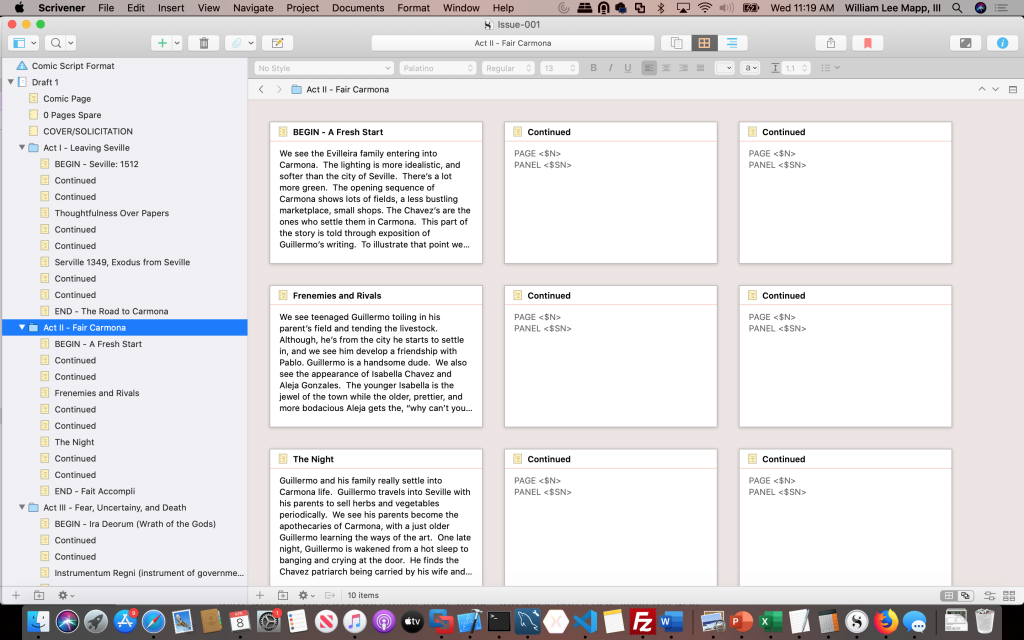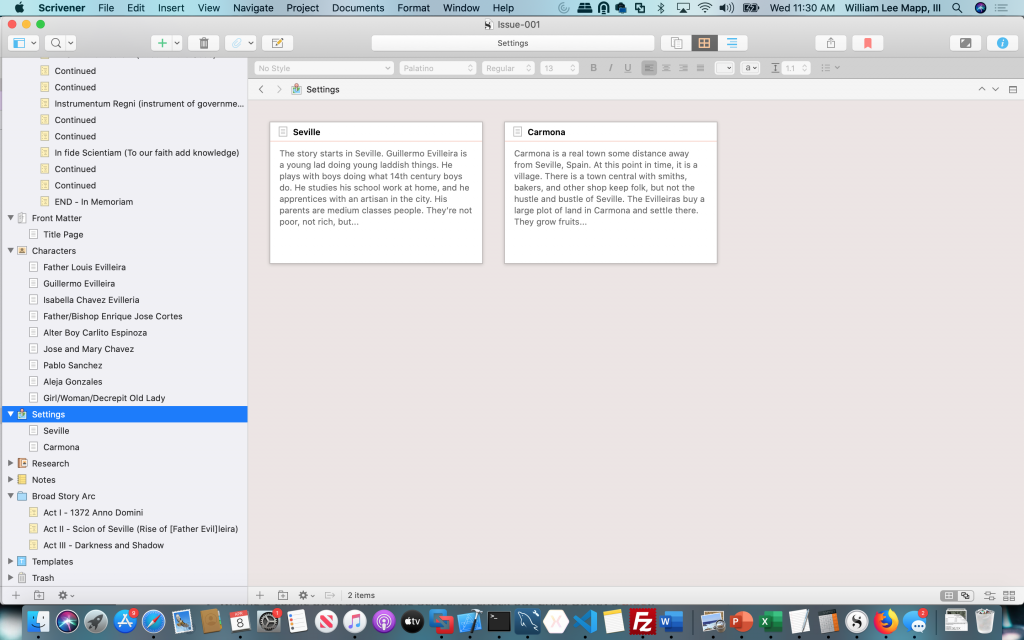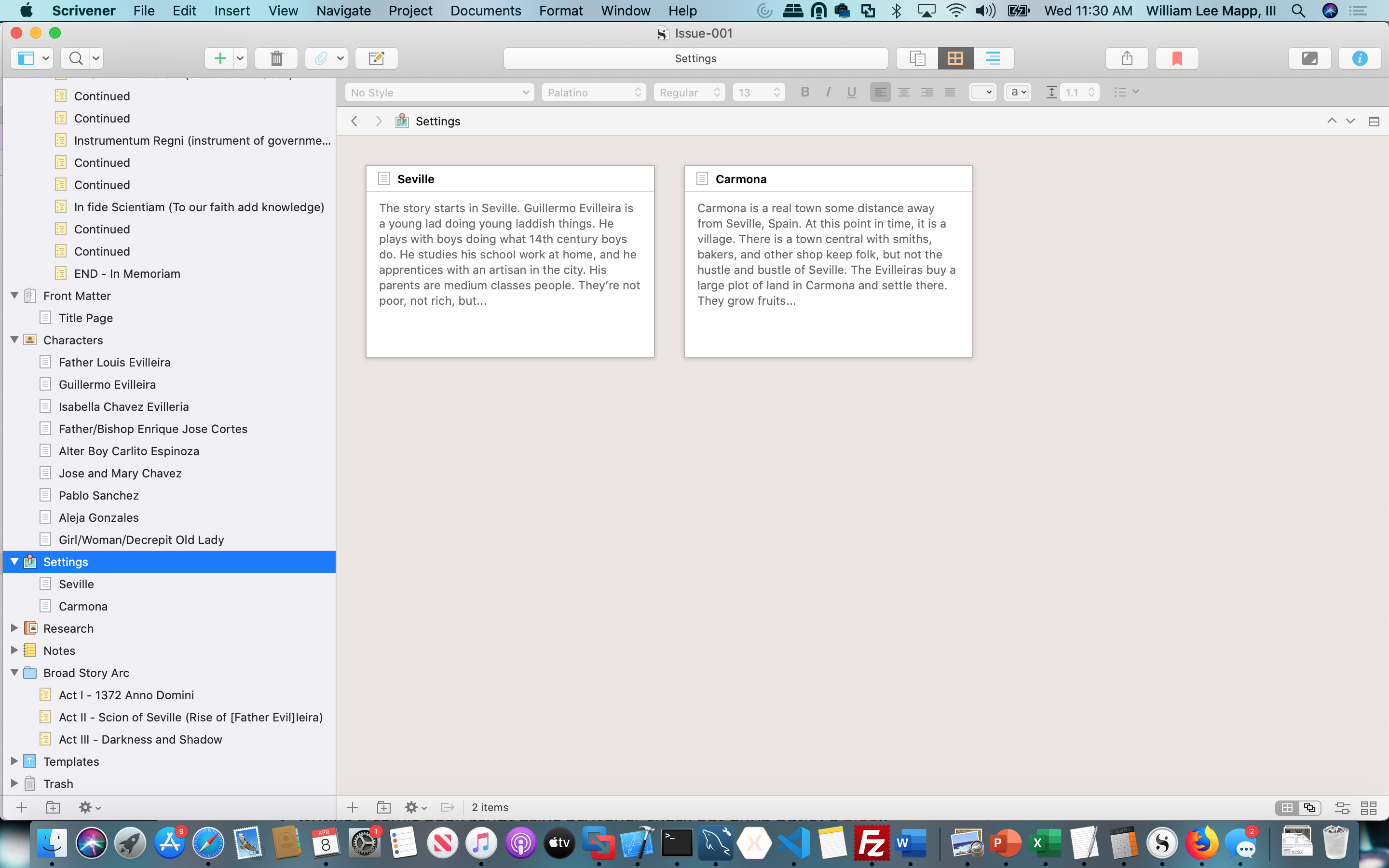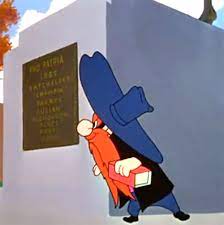
For many, the forced quarantine has given creators and makers time to complete projects they’ve had on the shelf. Every week I’ll feature an app, tool, game, or something techie you can use to be more productive or be entertained during the quarantine.
I do a lot of writing. A loootttttt of writing. After meeting people, I spend more time writing and designing than anything else. My writing spans design documentation and content. As with most things, you should use the write tool for the write job, and in some cases Microsoft Word or Google Docs aren’t the most appropriate tool.
So, this week, I’m sharing some details about Scrivener. Scrivener is a fantastic writing tool written by Literature and Latte, a group of writers who write software for writers. What’s truly remarkable about Scrivener is that it is an Integrated Development Environment (IDE) for writing projects. Unlike Word, which treats everything like a document, Scrivener treats your creation like it’s a true project. A project complete with artifacts, research documentation, notes, and ideas you’ll use along the way.
I wrote my first book using Scrivener after having issues separating the chapters into multiple Word files and trying to cross-reference between them. I know many Word pros swear by Word, and nail inter-document cross referencing, but it just wasn’t working for me. Scrivener is a complete tool with word counts, estimated page counts, and a big one; the ability to set writing goals for yourself. You can set a daily word count or have Scrivener compute a daily goal based upon your deadline.
Scrivener’s big points are the ability to organize your ideas and be able to capture notes as you write, and the ability to track your progress and statistics over time. Scrivener also constrains your writing by allowing you to set upper limits on word count and writing session time. These constraints help many people focus on the subject at hand.
Much of the action happens on the cork board. Your writing is ultimately an assembly of ideas, and every page you write in Scrivener can be referenced by an index card from the cork board. You can use the index cards as reference points and reminders during your writing to stay on track. Linking the written page to index cards makes it easy for you to rearrange your thoughts and order of the story. You do this by simply rearranging the index cards.

I’m currently using Scrivener to write my first novel, and using it to write an upcoming comic book. Yes, a comic book. Scrivener includes template projects for fiction, non-fiction, screenplays, and more! I’m using the Comic Book template inspired by Antony Johnston’s Scrivener setup to write my comic project. (For more insight into writing a comic book script using Scrivener check out Chris Oatley’s blog.)
You may have a novel in you, or a new book on your favorite subject you’ve been wanting to write. Some of us are learning that we have some extra time to be creative. If you’re looking for a tool that has more oomph than Word, and can help guide you along the creative process, try out Scrivener. It’s an inexpensive tool, and is discounted for educational use.






